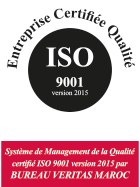The World Bank has released its latest assessment of the Moroccan economy. Its most recent semiannual report focused on the theme of “prioritizing reforms to improve the business climate,” as noted by Ahmadou Moustapha Ndiaye, World Bank Division Director for the Maghreb and Malta. Overall, Morocco’s economy is showing encouraging signs, with key indicators returning to pre-pandemic levels, along with a strong external position, Ndiaye explained during a press briefing held last Wednesday in Rabat.
In more detail, Javier Diaz Cassou, Senior Economist for Morocco at the World Bank, also highlighted positive economic trends. Despite ongoing drought conditions in 2024 and a significant decline in cereal production, the slowdown in GDP growth has remained modest, dropping from 3.4% to 3.2% between 2023 and 2024. It was especially non-agricultural GDP that drove overall growth, thanks to the performance of several key sectors. Cassou pointed in particular to the industrial sector, which had an “exceptional year,” notably in the automotive and aerospace industries, along with strong results in phosphate-related activities. The construction sector also saw a recovery.
On the inflation front, public policy has proven effective. “The disinflation process has been swift,” noted the senior economist, emphasizing the effective role played by Bank Al-Maghrib. At the same time, World Bank officials underscored the strength of Morocco’s external position, with the current account deficit narrowing significantly—falling from 5% to 2% of GDP, according to Cassou. He stressed the growing importance of goods and services exports. Fiscal consolidation efforts are also on track, with a stable debt level that has begun to decline, the report added.
For the current year, real GDP growth is expected to accelerate to 3.6%. Agricultural GDP is also projected to increase, based on the assumption of a modest recovery in cereal output and continued growth in high-value irrigated crops. In contrast, non-agricultural growth, which was the main driver of 2024’s results, is expected to stabilize—while remaining strong.
The Employment Puzzle
Despite the recovery of the national economy and encouraging outlooks, structural challenges remain. One of the most pressing concerns is the persistent lack of sufficient job creation—a fundamental issue. The labor market, the report notes, “lacks the capacity to generate enough decent jobs, which is the main engine for poverty reduction.” In this context, the World Bank experts point directly to the private sector, which, they say, “lacks the dynamism to absorb new labor market entrants and keep pace with demographic shifts.” That said, the experts also note that the situation is less alarming in urban areas, compared to rural regions, where job losses have been more severe. “This is a natural outcome of the modernization of agricultural activities, which have changed their operational models, as well as the impacts of climate change,” they concluded.
Mohamed Ali MRABI


























